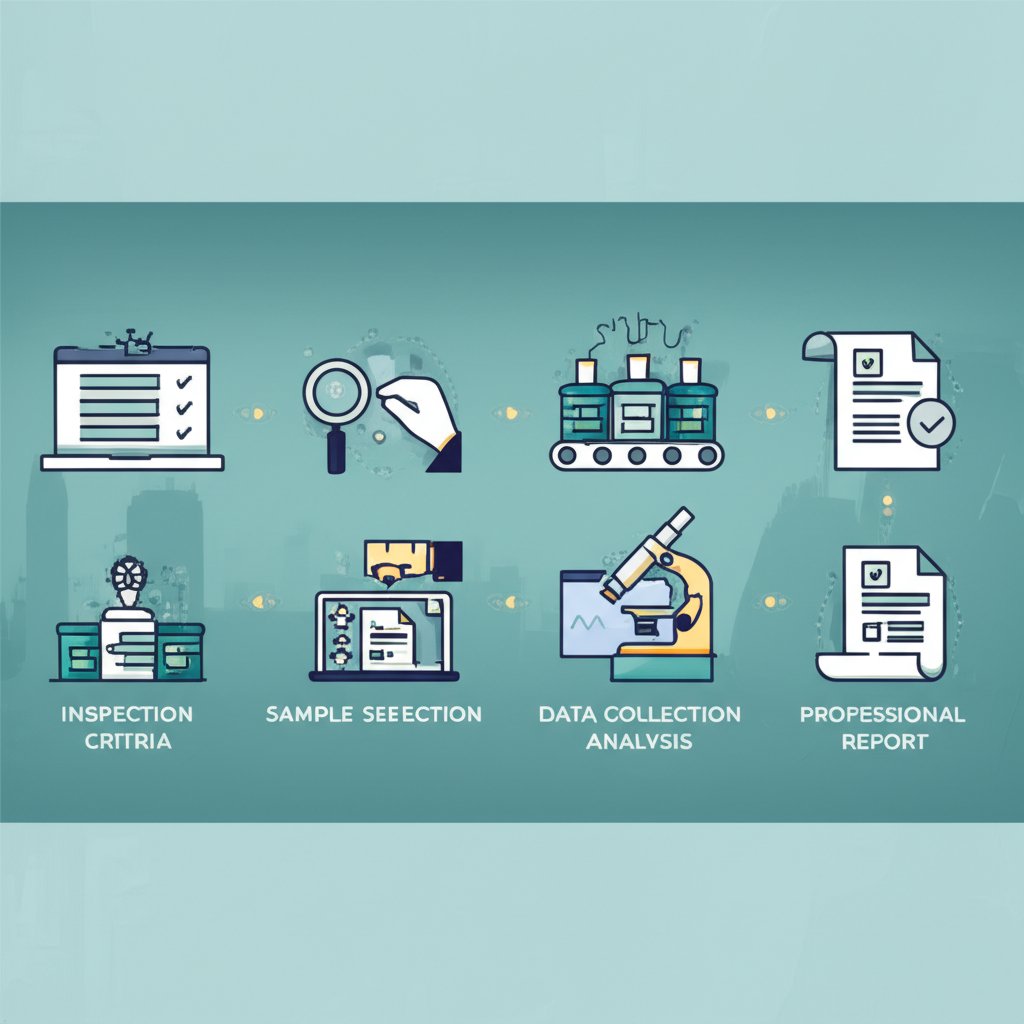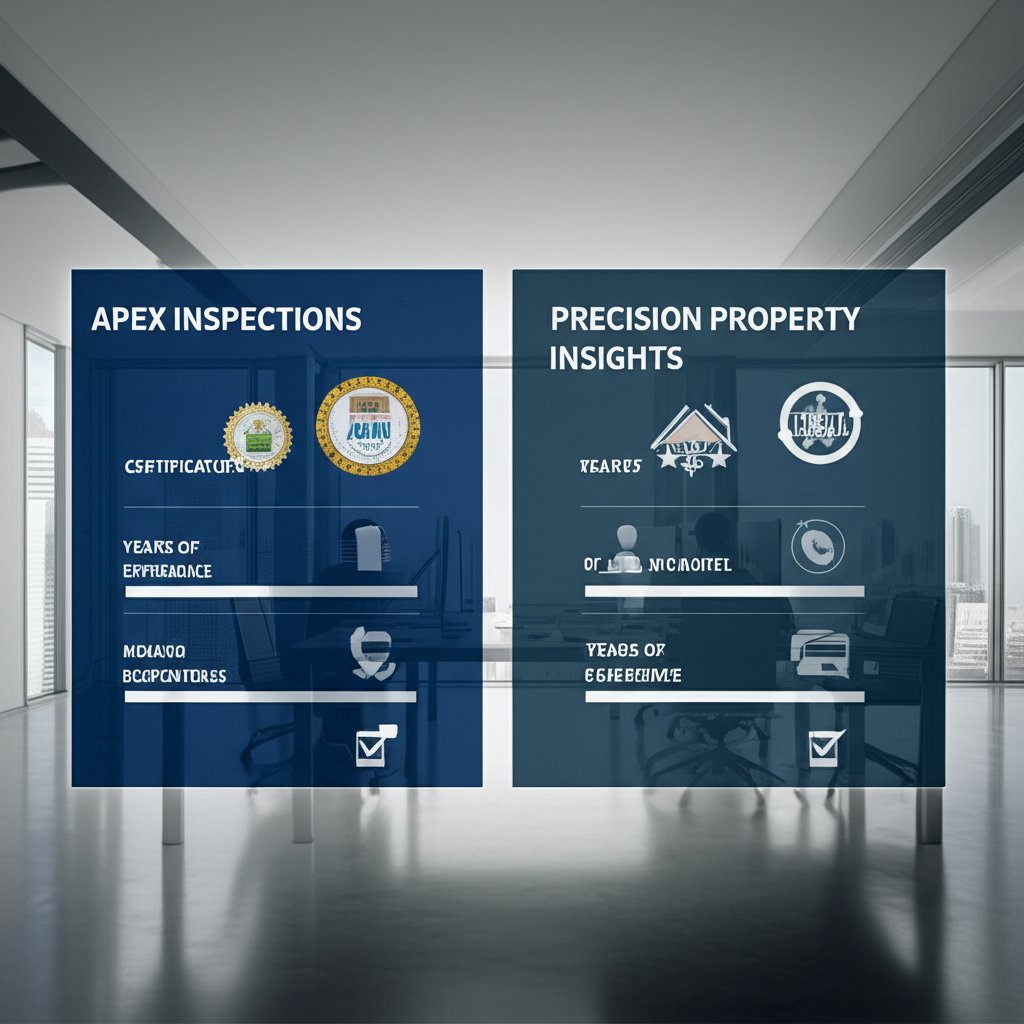
Introduction to China Quality Inspection
When you think about sourcing products from China, what comes to mind first? Competitive prices, vast manufacturing capabilities, and access to a wide range of goods are likely at the top of your list. But have you ever wondered what happens if your shipment arrives with unexpected defects or doesn’t meet your country’s regulations? Sounds complex? That’s where china quality inspection becomes indispensable.
China is a global manufacturing powerhouse, supplying goods to businesses of all sizes around the world. With this opportunity comes a unique set of challenges. Importing from China isn’t just about finding the right product at the right price—it’s about ensuring that every item meets your quality standards and regulatory requirements. Without effective quality control China measures, you could face issues like:
- Communication Barriers: Misunderstandings due to language differences can lead to incorrect specifications or missed requirements.
- Inconsistent Standards: Factories may interpret quality requirements differently, resulting in products that fall short of your expectations.
- Hidden Defects: Without proper oversight, defects might only be discovered after goods have shipped—when it’s too late to fix them.
Imagine receiving a container full of products, only to realize that a third of them are defective or non-compliant. In fact, global inspection data shows that the Acceptable Quality Limit (AQL) failure rate for China is around 30%—meaning one in three shipments may have issues if not properly inspected.
So, why is quality inspection in China so fundamental for importers?
- Protects Your Investment: By catching problems early, you avoid costly reworks, returns, or even lost sales.
- Ensures Compliance: Meeting both your own and your destination country’s regulations is essential for smooth customs clearance and market entry.
- Safeguards Your Reputation: Consistently delivering quality products strengthens your brand and builds customer trust.
- Reduces Risk: Proactive inspections help you identify unreliable suppliers and prevent fraud or misrepresentation.
This guide is designed to walk you through every critical aspect of China quality inspection. You’ll discover:
- Why third-party inspections are a must for importers
- The different types of inspection services available
- How the inspection process works from start to finish
- How to interpret inspection reports and take action
- What to look for when choosing a reliable inspection partner
- The real cost and value of investing in quality control
Whether you’re a first-time importer or a seasoned business owner, understanding and implementing robust quality inspection practices is the key to securing your supply chain and ensuring your products meet the highest standards. Let’s dive in and explore how you can safeguard your imports with confidence.

Why is Third-Party Quality Inspection in China Non-Negotiable?
When you’re thousands of miles away from your supplier, how can you be sure your products truly meet your standards? Imagine waiting weeks for a shipment, only to discover defects or compliance issues after the goods arrive. For importers, this is more than an inconvenience—it’s a costly setback. That’s why third party inspection China services have become essential for anyone sourcing from Chinese factories.
The Hidden Risks of Remote Manufacturing
Manufacturing in China offers undeniable advantages, but it also introduces several unique risks:
- Communication Barriers: Language differences and cultural nuances can lead to misunderstandings about product specifications or quality requirements.
- Inconsistent Quality Expectations: What a supplier considers “acceptable” might not align with your brand’s standards or your market’s regulations.
- Quality Fade: Over time, some manufacturers may gradually substitute lower-grade materials or cut corners—a practice known as “quality fade”—leading to a slow decline in product quality that’s hard to catch without vigilant oversight (QualityInspection.org).
Without a trusted presence on the ground, these issues can go unnoticed until it’s too late. So, how do you protect your business and your reputation?
The Value of Independent Verification
Partnering with a reputable china inspection company provides an objective, on-the-ground assessment of your products and processes. Here’s how third-party inspections serve as your eyes and ears in the factory:
- Objective Product Assessment: Third-party inspectors are independent from both buyer and supplier, delivering impartial reports that reflect the true state of your goods.
- Early Defect Detection: Inspections during various production stages catch issues before products are shipped, allowing for corrective action and reducing the risk of costly returns or rework.
- Compliance Assurance: Inspectors verify that goods meet your specifications and international standards, helping you avoid regulatory headaches and customs delays.
- Financial Risk Mitigation: By identifying problems early, you prevent losses from defective shipments and maintain better control over your investment.
- Brand Protection: Consistently delivering quality products builds trust with your customers and protects your brand from negative reviews or market recalls.
- Supplier Accountability: Regular third-party checks keep suppliers attentive and discourage shortcuts, giving you greater leverage in negotiations and ongoing relationships (Vocal Media).
Why Third-Party Inspections are a Must—Not a Maybe
Relying solely on supplier self-inspection or occasional visits is no longer enough in today’s fast-paced supply chains. Third-party inspections offer several distinct advantages:
- They are generally more cost-effective than sending your own staff overseas for every order.
- They provide timely, detailed reports so you can make informed decisions before goods leave the factory.
- They help establish a transparent, professional relationship with your supplier, signaling your commitment to quality and accountability.
In short, investing in a trusted china inspection company is not just about catching defects—it’s about building a resilient, reliable supply chain. As you consider the next steps in your quality control journey, understanding the range of inspection services available in China will help you tailor your approach and maximize your results.
Navigating the Spectrum of China Quality Inspection Services
When you’re managing an overseas supply chain, have you ever wondered exactly which inspection services you need—and at what stage? With so many options available, choosing the right china inspection services can feel overwhelming. Imagine missing a critical step, only to discover a costly mistake when your goods arrive. Understanding the different types of inspections is the first step to building a robust quality control system that fits your business needs.
Key Inspection Types Across the Production Lifecycle
Each stage of the manufacturing process in China presents unique risks. That’s why professional inspection companies offer a suite of services designed to catch issues early and ensure your products meet expectations before they ship. Here’s a breakdown of the most common inspection types importers rely on:
- Factory Audit (FA): Before you place an order, a factory audit evaluates a supplier’s capabilities, quality systems, and working conditions. This helps you avoid unreliable partners and verify compliance with your standards.
- Pre-Production Inspection (PPI): Conducted before mass production begins, PPIs check raw materials, components, and initial setups. You’ll catch material substitutions or process misunderstandings before they escalate.
- First Article Inspection (FAI): After the first unit is produced, inspectors compare it against your specifications. This step confirms the manufacturer’s ability to meet your requirements and allows for early corrections.
- During Production Inspection (DPI/DUPRO): Performed when 20-80% of goods are completed, DPIs spot defects and process deviations while there’s still time to fix problems—minimizing waste and delays.
- Pre-Shipment Inspection (PSI): As the final check before dispatch, PSIs verify finished goods’ quality, quantity, labeling, and packaging. This is especially crucial for importers who want to avoid surprises at their destination (pre shipment inspection China).
- Container Loading Supervision (CLS): Ever worried about the wrong products or quantities being shipped—or improper loading causing damage in transit? CLS ensures the right goods are loaded securely, in the correct amounts, and in proper condition.
Specialized Quality Inspection Solutions
Beyond the main stages, some situations require tailored services:
- Defect Sorting: When a batch contains mixed-quality items, inspectors can sort defective units on-site, ensuring only compliant goods are shipped.
- Production Monitoring: For high-risk or complex orders, continuous on-site supervision keeps every step under control, offering real-time updates and immediate corrective action if issues arise.
How Each Inspection Type Protects Your Supply Chain
Why invest in inspections at multiple stages? Each type targets specific risks, and together they form a comprehensive safety net:
- FA: Prevents unreliable partnerships and supply chain disruptions.
- PPI: Avoids costly rework by confirming materials and processes from the outset.
- FAI: Detects production misunderstandings before mass manufacturing begins.
- DPI/DUPRO: Catches defects while there’s still time to course-correct.
- PSI: Ensures only compliant, defect-free goods are shipped to your customers.
- CLS: Reduces losses from shipping errors or transit damage.
Imagine the peace of mind that comes from knowing every stage is covered. Understanding these varied approaches is crucial, and many importers choose to leverage comprehensive china inspection services to ensure all critical production stages are professionally monitored.
Streamlining Quality Control with a Trusted Partner
For businesses seeking efficiency and consistency, working with a provider that covers the entire inspection spectrum—like Eagle Eyes Quality Inspection Services—offers clear advantages. You’ll benefit from:
- Seamless coordination across multiple factories and regions
- Consistent reporting standards and actionable insights
- One point of contact for all your inspection needs
- On-the-ground expertise that adapts to your evolving requirements
In short, a holistic approach to quality inspection doesn’t just catch defects—it builds trust, safeguards your investment, and keeps your supply chain running smoothly. Next, let’s see how these inspections actually unfold in practice, so you know what to expect from the moment you book an inspection to the final report.

The Standard China Quality Inspection Process
Ever wondered what actually happens after you book a product inspection in China? The china inspection process might sound daunting, especially if you’re managing your supply chain from across the globe. But breaking it down step by step reveals a clear, logical workflow designed to protect your interests and ensure product quality. Let’s walk through what you can expect, from the moment you initiate an inspection to the final report landing in your inbox.
Step-by-Step: The Quality Inspection Workflow in China
- Defining the Inspection Scope and Criteria
Imagine you’re about to order thousands of units—how do you make sure the inspector checks what matters most? The process starts with you and the inspection company agreeing on detailed requirements, including product specifications, quality standards, packaging needs, and any special tests. This clarity ensures the inspection is tailored to your unique order, not just a generic checklist. - Booking the Inspection
Once the scope is set, you schedule the inspection—usually timed with key production milestones, like when goods are 80% packed for a pre-shipment check. Clear communication with your supplier is crucial, as the factory must prepare samples, documentation, and access for the inspector. - On-Site Inspection Visit
This is where the real action happens. A qualified inspector travels to the factory and systematically examines your goods. The visit typically includes:- Quantity Verification: Does the shipment match your order? Inspectors count or weigh products to confirm accuracy.
- Workmanship Check: Are there any visible defects, inconsistencies, or poor finishes?
- Specification Adherence: Inspectors measure dimensions, check materials, and compare samples to your approved specs.
- Function Testing: Products are tested to ensure they work as intended—think electronics powering on, zippers functioning, or toys passing safety checks.
- Packaging Review: Is the packaging sturdy, correctly labeled, and compliant with your requirements? Packaging is checked to prevent transit damage and avoid customs issues.
- Defect Classification and Recording
During the inspection, any issues are categorized (such as critical, major, or minor defects) and documented with photos and detailed notes. This step is vital for transparency and helps you make informed decisions about accepting, rejecting, or requesting rework on the goods. - Issuing the Inspection Report
After the visit, the inspection company compiles a comprehensive report. This document includes a summary of findings, defect details, photos, test results, and an overall pass/fail recommendation. The report is typically delivered within 24 hours, allowing you to act quickly—whether that means approving shipment or negotiating corrective actions with your supplier (Medium).
Why Clear Communication and Documentation Matter
One of the most common pitfalls in the quality inspection workflow China is vague or incomplete instructions. Imagine receiving a report that doesn’t address your biggest concerns, simply because the inspector didn’t have enough detail. To avoid this, always provide:
- Exact product specifications and approved samples
- Clear quality standards and tolerance levels
- Packaging and labeling requirements
- Any special instructions or tests needed for your market
By investing time upfront in detailed communication, you empower the inspection team to deliver accurate, actionable results—saving you from costly surprises down the line.
What Happens Next?
Once you receive your inspection report, you’re equipped to make informed decisions about your shipment. But how do you interpret the findings and decide what action to take? In the next section, we’ll break down how to read a China inspection report, what key elements to look for, and how to turn inspection data into smart business decisions.
Decoding Your China Quality Inspection Report
When your long-awaited china inspection report arrives in your inbox, what should you look for first? For many importers, interpreting these detailed documents can feel overwhelming—especially if you’re not sure what the numbers, photos, or technical terms really mean. Let’s break down the essentials so you can quickly understand your report, spot potential issues, and make confident decisions about your shipment.
Key Sections of a China Inspection Report
Most professional inspection companies in China structure their reports to give you a clear, actionable overview. Here’s what you’ll typically find:
- Overall Result (Pass/Fail/Pending): This headline tells you at a glance whether your goods meet the agreed standards or if further action is needed.
- Summary of Findings: A concise overview highlighting major issues, compliance with your requirements, and any urgent concerns.
- Defect Descriptions (with Photos): Detailed lists of defects found—each one categorized and illustrated with clear images for transparency.
- Quantity Verified: Confirmation that the correct number of units was produced and is ready for shipment.
- Measurements & Test Results: Actual data from on-site tests, such as dimensions, weights, function checks, and packaging assessments.
Imagine you’re reviewing a report for a batch of electronic toys. You’ll notice photos of any cosmetic flaws, a table listing failed function tests, and a summary stating if the shipment passed or failed based on your Acceptable Quality Limit (AQL).
Understanding AQL China and Defect Classifications
One of the most important concepts you’ll find in a china inspection report is the Acceptable Quality Limit, or AQL China. But what does it really mean for your business?
- AQL (Acceptable Quality Limit): This is the maximum number of defective items allowed in a sample before the batch is rejected. It’s a statistical tool that helps you balance quality with production realities. For example, if your AQL for major defects is 2.5%, and the sample exceeds this threshold, the shipment fails.
Defects are usually classified into three main categories, each with its own impact on your decision:
| Defect Type | Description | Example | Common Action |
|---|---|---|---|
| Critical | Could cause harm or make the product unsafe/unusable | Exposed wiring on electronics, sharp edges on tools | Immediate rejection or recall; zero tolerance |
| Major | Affects function, performance, or appearance; likely to be noticed by customers | Non-working switch, visible scratches, wrong color | May negotiate rework or partial acceptance |
| Minor | Does not affect function or safety; minor cosmetic issues | Small paint blemish, slight mislabeling | Usually accepted if within AQL limits |
For instance, a shipment with even one critical defect will almost always fail inspection, while a few minor defects may be acceptable depending on your tolerance.
How to Interpret and Act on Your Inspection Results
So, you’ve read through the report—now what? Here are practical steps to turn inspection data into smart business decisions:
- Review the Overall Result: Start with the pass/fail status and summary. If the report is pending, check which issues need clarification or further testing.
- Examine Defect Details: Look at the defect table and photos. Pay special attention to critical and major defects, as these have the biggest impact on safety and customer satisfaction.
- Check the AQL Assessment: Compare the number of defects found to your agreed AQL levels. If defects exceed your limits, the shipment should not be accepted as-is.
- Assess Verified Quantities and Measurements: Ensure the quantity and specifications match your order to avoid shortages or compliance issues.
- Decide on Next Steps:
- If the goods pass: Approve shipment and proceed with payment.
- If the goods fail: Negotiate rework, replacement, or reject the batch.
- If the report is unclear: Request further clarification or a re-inspection.
Remember, a thorough inspection report is your best tool for quality assurance and risk management. By understanding and acting on these findings, you protect your investment, ensure customer satisfaction, and maintain a strong supply chain.
Next, let’s explore how to choose the right inspection partner—because having clear reports is only as valuable as the expertise and integrity behind them.

How to Choose the Best China Inspection Company
When you search for the best china inspection company, do you feel overwhelmed by the options and unsure which partner will truly protect your interests? Imagine trusting your entire shipment to a company you’ve never met—only to discover too late that their inspections weren’t thorough or their ethics questionable. With so much at stake, making an informed choice isn’t just smart—it’s essential. Let’s break down the most important factors to consider, so you can confidently select a partner who will safeguard your supply chain and reputation.
What to Look for in a China Quality Inspection Company
Not all inspection agencies are created equal. You’ll notice that industry leaders share certain traits that set them apart—traits consistently highlighted in china quality inspection reviews and buyer testimonials. Here’s a checklist to guide your decision:
| Selection Criteria | Why It Matters | What to Ask or Check |
|---|---|---|
| Accreditation & Certifications | Ensures adherence to international standards and credibility | Does the company hold ISO 9001, ISO/IEC 17020, or similar certifications? Are they recognized by industry associations or local authorities? |
| Industry Experience | Deep knowledge of your product category and market requirements | How many years have they operated? Do they have proven expertise in your sector? |
| Service Scope | Comprehensive coverage across all inspection and audit needs | Do they offer Factory Audits, Pre-Production, During Production, Pre-Shipment, and Container Loading Supervision? Any specialized services? |
| Inspector Qualifications | Assures inspections are conducted by trained, unbiased professionals | What training do inspectors receive? Are they experienced in your product type? |
| Reporting Standards | Clear, detailed, and timely reports for actionable decisions | Can you see sample reports? Are findings well-documented with photos and defect breakdowns? |
| Geographical Coverage | Ability to serve your factories, wherever they are located | Does the company cover all major manufacturing hubs in China and nearby regions? |
| Pricing Transparency | No hidden fees; predictable budgeting | Are rates quoted per man-day? Are all costs (travel, reporting, sampling) included up front? |
| Communication | Responsive, clear, and proactive service | How quickly do they respond to inquiries? Will you have a dedicated contact? |
| Ethical Standards | Integrity and impartiality in every inspection | What anti-bribery and conflict-of-interest policies are in place? Can they provide references? |
Why These Criteria Make a Difference
Imagine you’re comparing two inspection companies. One boasts international certifications, transparent pricing, and glowing reviews; the other is vague about credentials and slow to reply. Which would you trust with your investment? Real-world china quality inspection reviews often highlight how critical these criteria are for avoiding costly mistakes, delays, or even legal trouble.
For example, a company with broad geographical coverage can dispatch qualified inspectors quickly—even to remote factory locations. Accredited firms are more likely to deliver reports that hold up in legal or regulatory disputes. And clear, detailed reporting standards mean you’ll never be left guessing about the condition of your goods.
The Value of a Trusted, Full-Service Partner
While many companies offer basic inspection services, working with a provider like Eagle Eyes Quality Inspection Services offers distinct advantages. Their extensive coverage, rigorous inspector training, and robust ethical practices ensure your products are checked thoroughly and impartially—no matter where your suppliers are based. You’ll benefit from actionable insights, rapid communication, and the peace of mind that comes from knowing your supply chain is in good hands.
In summary, choosing the right inspection partner isn’t just about ticking boxes—it’s about building a foundation of trust, transparency, and expertise that supports your business for the long haul. Now that you know what to look for, let’s explore the true cost and value of investing in quality inspection—and why it’s a smart move for your bottom line.
The True Cost vs. Value of Investing in China Quality Inspection
When you’re weighing the china quality inspection cost, do you ever wonder if it’s really worth it? Many importers are tempted to skip or cut corners on quality control, especially if margins are tight or the order is small. But imagine this: You save a few hundred dollars upfront, only to face thousands in losses later because a shipment arrives with defects, compliance issues, or the wrong products entirely. Let’s break down why quality inspection is not just an expense—but a strategic investment in your business’s future.
What Does a Typical China Quality Inspection Cost?
On average, a standard third-party inspection in China costs between $250 and $500 per day, with $299 per man-day being a common all-inclusive rate for random inspections. This fee covers much more than a quick glance at your goods—it includes travel, extensive visual checks, sampling, function testing, packaging review, and a detailed inspection report. While some importers see this as a significant outlay, it’s important to consider what you’re really paying for: peace of mind, risk mitigation, and the ability to make informed decisions before goods leave the factory.
The Hidden Costs of Skipping Inspections
Still on the fence? Let’s flip the question: What could it cost if you don’t invest in quality inspection? Here’s what’s at stake:
- Receiving Defective Goods: Without inspection, you might only discover defects after the shipment arrives—too late to fix or return. This can mean immediate financial loss, especially for large or custom orders.
- Recalls and Returns: Faulty products can trigger costly recalls, returns, and even regulatory penalties if safety standards aren’t met.
- Brand Damage: Imagine your customers receiving poor-quality or unsafe products. Negative reviews and lost trust can haunt your brand for years.
- Lost Sales and Market Share: Delays due to rework or replacement shipments often mean missed deadlines and lost business opportunities.
- Legal Liabilities: Non-compliance with local regulations can result in fines, lawsuits, or goods being rejected at customs.
- Rework Costs: Fixing issues after production is far more expensive than catching them early—sometimes requiring entire batches to be remade or repaired.
- Strained Supplier Relationships: Disputes over defects or missed specifications can sour long-term partnerships, making future collaboration difficult.
Quality Inspection as a Value-Driven Investment
When you look at the big picture, china inspection value becomes clear. The upfront cost of inspection is a fraction of what you might lose if things go wrong. In fact, many experienced importers view quality inspection as a form of insurance—a way to proactively identify and resolve issues before they escalate.
Consider this scenario: You pay $299 for a Pre-Shipment Inspection on a $20,000 order. The inspector discovers a critical defect that would have rendered the goods unsellable in your market. By catching the problem early, you avoid the far greater costs of returns, lost sales, and reputation damage. In this case, the ROI on your inspection investment is immediate and substantial.
Maximizing ROI: How to Get the Most from Your Inspection Budget
Worried about inspection costs adding up? Here are proven ways to maximize value without sacrificing quality:
- Prioritize High-Value or High-Risk Orders: Invest in inspections for large, complex, or mission-critical shipments where the stakes are highest.
- Provide Detailed Specifications: The clearer your requirements, the more targeted and efficient the inspection can be—reducing time and cost.
- Consolidate Inspections: If you have multiple orders from the same supplier or region, group them to save on travel and logistics fees.
- Work with Reliable Partners: Choose inspection companies with transparent pricing and proven expertise. Avoid the temptation to hire the cheapest inspectors, as poor-quality checks can be worse than none at all.
Ultimately, investing in robust quality control is about more than protecting a single shipment—it’s about building a resilient, profitable business. When you treat inspection as a strategic tool, you’ll notice fewer surprises, smoother supply chains, and stronger customer satisfaction. Next, let’s recap the critical role that quality inspection plays in global sourcing and how proactive management can set your business apart.
Conclusion
When you think about the journey from a factory floor in China to your customer’s hands, what stands between a successful delivery and a costly setback? For most importers, the answer is clear: china sourcing quality control is the linchpin that holds your entire supply chain together. But what does it really take to secure your imports with confidence?
Quality Control: The Foundation of Global Sourcing Success
Imagine launching a new product line, only to discover after arrival that key items are defective or non-compliant. The ripple effects—returns, lost sales, and brand damage—can be devastating. That’s why meticulous quality inspection isn’t just a checkbox; it’s a strategic safeguard for your business. As highlighted in recent industry insights, robust quality control minimizes risks, protects your investment, and ensures every shipment meets the standards your customers expect.
- Risk Mitigation: Early detection of defects and process issues prevents costly surprises down the line.
- Product Conformity: Regular inspections verify that every batch matches your specifications and regulatory needs.
- Brand Reputation: Consistent quality builds trust and sets you apart from competitors who cut corners.
When you integrate quality inspection into your procurement strategy, you’re not just reacting to problems—you’re proactively building a resilient, reliable supply chain.
Why Your Choice of China Quality Inspection Partner Matters
Sounds straightforward, right? But not all inspection partners are created equal. The right china quality inspection partner will do more than just check boxes—they’ll serve as your trusted eyes and ears in China, understanding your standards, communicating clearly, and acting decisively when issues arise. According to sourcing experts, working with an experienced, reputable inspection agency can mean the difference between smooth operations and ongoing headaches.
- They bridge language and cultural gaps, ensuring your requirements are clearly understood.
- They provide objective, detailed reports so you can make informed decisions—fast.
- They help you build long-term supplier relationships by setting and maintaining clear expectations.
Take Action: Make Quality Inspection Central to Your Sourcing Strategy
So, what’s your next move? If you want to stay competitive, avoid unnecessary risks, and deliver products that delight your customers, now is the time to make quality inspection a core part of your sourcing process. Don’t wait for problems to surface—adopt a proactive approach by partnering with a trusted provider like Eagle Eyes Quality Inspection Services. Their comprehensive coverage, rigorous protocols, and on-the-ground expertise empower you to source from China with confidence, knowing your interests are protected at every step.
In today’s global market, quality is not an option—it’s a necessity. By choosing the right inspection partner and prioritizing china sourcing quality control, you’re investing in long-term business success, customer satisfaction, and a reputation for excellence. Secure your imports, strengthen your supply chain, and set your business apart by making quality inspection your competitive advantage.
China Quality Inspection FAQs
1. What are the main types of quality inspection in China?
The primary types include Factory Audit, Pre-Production Inspection, First Article Inspection, During Production Inspection, Pre-Shipment Inspection, and Container Loading Supervision. Each stage targets specific risks, from verifying supplier reliability and materials to ensuring finished goods meet your specifications before shipment.
2. Why is third-party inspection important when sourcing from China?
Third-party inspections provide independent verification of product quality and compliance, catching issues early and reducing the risk of costly defects or non-compliance. They act as your eyes on the factory floor, ensuring your investment is protected and your brand reputation is maintained.
3. How much does a typical China quality inspection cost?
A standard third-party inspection in China usually ranges from $250 to $500 per day, with $299 per man-day being common for all-inclusive services. This investment helps prevent larger losses from defective goods, recalls, or compliance failures.
4. What should I look for when choosing a China inspection company?
Key criteria include accreditation, industry experience, service coverage, inspector qualifications, transparent pricing, clear reporting, responsive communication, and strong ethical standards. Companies like Eagle Eyes Quality Inspection Services offer extensive coverage, rigorous protocols, and impartial on-the-ground expertise.
5. How do I interpret a China inspection report and what actions should I take?
Focus on the overall result (pass/fail), defect types (critical, major, minor), AQL limits, and verified quantities. If the report highlights issues, you can decide to accept, reject, or negotiate rework with your supplier before shipment, minimizing risk and cost.



